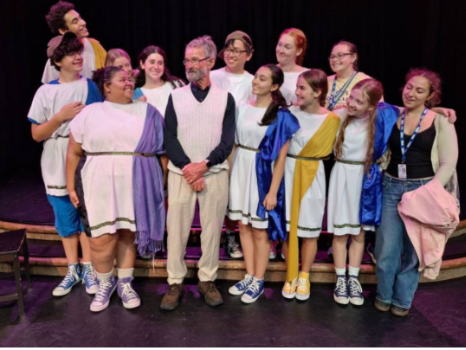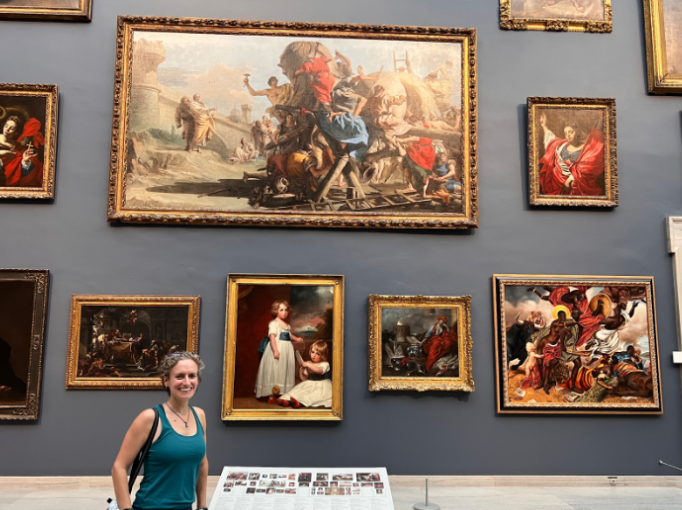o dulces comitum, salvete, coetus!
May this letter find you having a good start to the school year, perhaps still nourished by summer’s gentler pace and pursuits. While I do miss otium for my own reading and gardening, for me the end of the summer signals a return to time well spent with colleagues and friends and the young people under my care.
I’m especially looking forward to gathering with the ClassConn community at our annual meeting on Saturday, November 8, at Hopkins School in New Haven. This campus has ample parking and an elevator for those with mobility challenges. In addition to opportunities to connect with colleagues professionally and socially, the program will have three workshops: TJ Howell on writing Latin in the classroom, Abbi Holt on teaching about Nubia, and Mira Seo on global Classics. The program will conclude with a performance of the comedy Ecce Romani on a Shoestring.
This affectionate send-up of the textbook was written by my Hopkins School colleague, Michael Calderone. His children all studied Latin in our middle school program using Ecce Romani. High school students performed this show at the Edinburgh Fringe Festival this past summer with wonderful reviews by Rebecca Vines on Broadway Baby, by FringeFanJohnny, and by Donal C. Stewart of the British Theatre Guide. They also had the nervewracking privilege of performing the show for one of the contributors to the original Scottish textbook, Dr. Robert Orr.
Register for the annual meeting on the ClassConn website at this link. There will soon be more information there as well, such as maps and information about parking.
This past year, the ClassConn events ad hoc committee announced a plan for a series of events throughout the year, with the intention of providing wider opportunities for sodalitas. This series commenced in July, with a terrific visit to the Wadsworth Athenaeum led by Bethanie Sawyer and me. I enjoyed not just the art and the good company, but also the new teaching ideas that our conversations inspired. I encourage you to come join in future events. Help plan them! What should our next ClassConn excursion be? Do you know of a play, performance, lecture, or a movie we should attend? Unfortunately, travelling to Rome together is not within our budget…but you can share more reasonable ideas using this form.
Ecce Romani on a Shoestring
The cast of Shoestring with Dr. Orr.
Bethanie appreciating the oils.
Kate and Bethanie @ the Wadsworth.
In times like these it is important to remember that Rome, as a national power, derived a great deal of success and longevity from the integrating many cultures and offering opportunities to people from all backgrounds. We at ClassConn welcome the wealth of perspectives and experiences that our members bring to our forum. We gain strength from cooperation, exchange of ideas, and actively working for our whole community. The ad hoc committee for advocacy is currently engaged in the challenging task of updating our list of Classics programs and classicists in Connecticut. Please help by verifying your own information when contacted, and encouraging any other classical Nutmeggers you know to join ClassConn or at least add their information to our list. ClassConn needs not only your input and ideas to serve you best and to support the longevity of classical studies in Connecticut, but also your reciprocal energy and effort. Let us know what you need, and I would love to see you at future events!
curate ut valeatis,
Kate Horsley, Hopkins School, New Haven













































